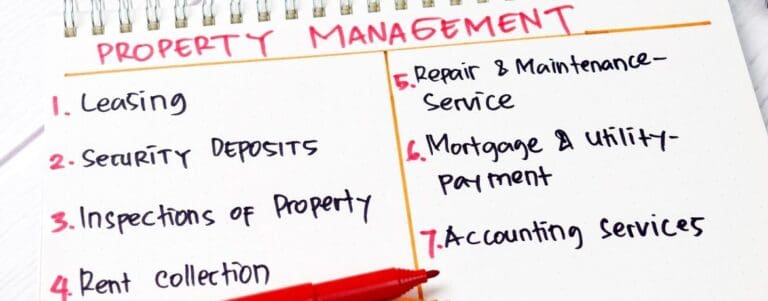Top Tips for Maximizing Your Rental Property ROI

2. Set Competitive Rent Prices
Setting your rental price too high can deter potential tenants, leading to longer vacancies. Conversely, pricing too low cuts into your profit margins. Conduct market research to determine competitive rates in your area. Consider factors such as property size, condition, and included amenities.
Tip: Use online rental calculators and consult with local real estate professionals to find the sweet spot.
3. Upgrade Strategically
Small upgrades can significantly enhance your property’s appeal and justify higher rent. Focus on improvements that deliver the most ROI, such as modernizing kitchens and bathrooms, adding energy-efficient appliances, or installing durable flooring.
Tip: Stick to neutral color schemes and timeless designs to appeal to a broad range of tenants.
4. Screen Tenants Thoroughly
A reliable tenant who pays rent on time and takes care of your property is invaluable. Proper screening minimizes the risk of costly evictions, property damage, or missed payments.
What to check:
- Credit history
- Employment verification
- References from previous landlords
- Criminal background
Tip: Use a professional tenant screening service for thorough vetting.
5. Minimize Vacancy Rates
Every day your property sits empty is a day you lose money. To keep your property occupied:
- Offer flexible lease terms to attract diverse tenant types.
- Provide incentives for lease renewals, such as small rent discounts or minor upgrades.
- Advertise widely across online platforms, social media, and local networks.
Tip: Maintain a good relationship with tenants and address concerns promptly to encourage renewals.
6. Keep Maintenance Costs in Check
Regular maintenance prevents small issues from turning into expensive repairs. Conduct routine inspections and address repairs promptly to maintain the property’s value and tenant satisfaction.
Tips to save on maintenance:
- Build a network of reliable, cost-effective contractors.
- Consider a property management company if you own multiple units.
7. Leverage Tax Benefits
Rental properties come with numerous tax deductions that can boost your ROI. These may include:
- Mortgage interest
- Property taxes
- Repairs and maintenance costs
- Depreciation
- Cost Segregation Analysis
Tip: Work with a tax professional or CPA to ensure you claim every eligible deduction.
8. Optimize Property Management
Efficient property management is key to maximizing ROI. Whether you manage the property yourself or hire a professional, prioritize tenant satisfaction, quick response times, and proper accounting.
Tip: Use property management software to streamline rent collection, maintenance requests, and communication.
9. Consider Value-Added Services
Additional services can generate extra income and improve tenant retention. Examples include:
- Offering furnished units for short-term rentals
- Adding coin-operated laundry machines
- Providing premium internet packages
Tip: Assess the demand for these services in your area before investing.
10. Stay Informed About the Market
Real estate markets can change rapidly. Staying informed about trends, such as shifts in rental demand or property value changes, can help you make data-driven decisions.
Tip: Join local real estate investment groups and follow trusted online resources for updates.
11. Be Strategic About Financing
How you finance your rental property impacts your ROI. Compare mortgage rates, consider refinancing if interest rates drop, and avoid overleveraging yourself with high debt.
Tip: Choose a loan product that aligns with your investment goals, whether it’s a 15-year mortgage for faster equity building or a 30-year loan for lower monthly payments. Work with a reputable lender to learn more.
12. Regularly Evaluate Performance
Track key metrics like cash flow, occupancy rates, and maintenance costs to assess how well your property is performing. Regular evaluations help you identify areas for improvement and ensure you’re meeting your ROI targets.
Tip: Use property management tools or work with a financial advisor to maintain clear records and analyze your investment.
13. Build Relationships with Real Estate Professionals
A strong network of real estate agents, accountants, and contractors can provide insights and resources to improve your ROI. Professionals with local expertise can help you identify opportunities, negotiate better deals, and manage your property more effectively.
Tip: Partner with a real estate brokerage that offers in-house accounting services to streamline tax planning and financial management.

Final Thoughts: Keep That ROI High
Maximizing your rental property ROI requires a balance of strategic investment, effective management, and ongoing market awareness. By implementing these tips, you can increase your rental income, reduce expenses, and ensure a steady growth in your property’s value.
Ready to make the most of your rental property? Start today by focusing on the areas that offer the greatest potential for improvement and watch your ROI grow over time!
Take Advantage of Our Experience
With Southern Bay Realty, you can better maximize your rental investment return by taking advantage of our experience. Having years in this industry both professionally and personally, our team ensure the highest ROI manageable for your investment.
Frequently Asked Questions
- How should I adjust my strategy if my rental property is in a seasonal market (e.g., beach town or college town)?
- If I have multiple rental properties, how can I structure them (entity-/ownership-wise) to optimize tax planning and liability protection without hurting ROI?
- How can emerging technologies (smart home devices, IoT, predictive maintenance) be leveraged in rental properties to improve ROI — and what should I watch out for?
Question: How should I adjust my strategy if my rental property is in a seasonal market (e.g., beach town or college town)?
Answer: In seasonal markets, vacancies and rent fluctuations tend to follow predictable patterns (e.g., summer surge, winter lull). To maximize ROI in these markets:
-
Plan for off-season vacancies by building a larger “vacancy buffer” in your financial projections, so you’re not caught off guard.
-
Offer flexible lease terms that align with peak seasons — for example, shorter leases or furnished units during high-demand times.
-
Consider specialized marketing for off-season renters (e.g., long-term leases during slower months, corporate housing, winter short-term rentals) to keep the property occupied.
-
Adjust rent pricing dynamically: higher during peak demand, and possibly lower (but still profitable) during slow periods.
-
Use the slower season for maintenance upgrades, tenant turnover work, or repositioning the property so you’re ready for the next peak.
This kind of strategy goes beyond setting competitive rent and minimizing vacancy (topics addressed in the blog) and tailors it specifically to seasonal demand.
Question: If I have multiple rental properties, how can I structure them (entity-/ownership-wise) to optimize tax planning and liability protection without hurting ROI?
Answer: Owning multiple rental properties brings additional considerations. Some steps to balance tax and liability goals while preserving ROI:
-
Consider forming a separate entity (such as an LLC) for each property or a group of properties to compartmentalize liability (so issues on one don’t threaten the others).
-
Review the tax implications: owning each property individually vs. through a single entity can affect depreciation recapture, passive activity rules, and eligibility for certain deductions. While the blog mentions “leverage tax benefits” (mortgage interest, depreciation) and working with a tax professional, this structure-level strategy adds another layer.
-
Weigh the cost of additional entity formation (legal, annual state filings, separate bank accounts) against the potential liability protection and peace of mind. The overhead should not significantly reduce net cash flow.
-
Use a centralized property-management system across all properties (or standardized processes) to reduce administrative costs and preserve ROI — echoing the blog’s point about efficient management.
-
Keep clear financial records for each property/ entity so you can track performance individually (ties into “regularly evaluate performance”).
In short: the ownership structure can be an important lever in a multi-property portfolio, but it should be designed with both tax/protection goals and ROI in mind.
Question: How can emerging technologies (smart home devices, IoT, predictive maintenance) be leveraged in rental properties to improve ROI — and what should I watch out for?
Answer: While the blog mentions “upgrade strategically” and “keep maintenance costs in check,” this question digs into how modern tech can amplify those strategies. Here’s how:
-
Smart sensors (leak detectors, water-usage monitors, smart thermostats) can help prevent major repairs (e.g., hidden leaks, frozen pipes) and reduce utility expenses; this supports the “regular maintenance” and cost-control angle.
-
Smart locks and remote entry systems can reduce key-turnover costs, improve tenant convenience and appeal, which helps vacancy reduction and tenant retention.
-
Predictive maintenance platforms (for HVAC, appliances) can schedule servicing before failures occur, keeping repair costs lower and occupant satisfaction higher — aligning with proactive management.
-
Data-driven analytics from property-management software (tenant behavior, rent-collection timing, maintenance request trends) can help refine your ROI tracking and performance evaluations (building on the “regularly evaluate performance” tip).
What to watch out for: -
Up-front cost: Some smart devices require higher capital outlay — you should estimate pay-back period and whether rent premiums or cost savings justify it.
-
Compatibility and maintenance: Tech systems can become outdated or require extra upkeep; you don’t want tech headaches eating into your net income.
-
Tenant privacy and security: Smart devices capture data; you must be transparent with tenants and ensure cybersecurity to avoid liability.
-
Whether the local market values the "smart" features: In some rental markets the premium for smart-home features is minimal — so the investment may not translate into higher rent or occupancy.
In short: using emerging tech can be a powerful advantage for boosting ROI, but you’ll want to make sure each technology investment is aligned with your market, cost structure, and tenant expectations.





